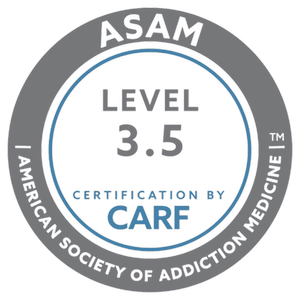The opioid epidemic is, regrettably, nothing new to our society. While this crisis has evolved over the last two decades and is still evolving, many people still have questions about what these drugs are and how they became so prevalent. You may have these drug terms used interchangeably or together. But what do they mean and how are they different? Here’s what you need to know.
Understanding the Differences
Opiates: Opiates are naturally occurring substances that alter how we receive pain and pleasure. Through a refining process, opiates produce compounds like codeine and morphine. These compositions are commonly used to treat pain disorders and injuries. Heroin can also be produced through this process.
Opioids: An opioid refers to a class of substances, either synthetic or naturally-occurring ones like opiates, that restructure the opioid receptors in the brain, having a similar effect to opiates on our pain and pleasure systems. Examples include Fentanyl, Hydrocodone, Oxycodone, and semi-synthetic heroin.
Stimulants: Stimulants are a separate class of drugs that focus on speeding up the central nervous system. Common examples of stimulants include cocaine, methamphetamine, and Adderall.
Opiates and opioids are often used interchangeably, though these terms refer to two different types of substances. Both can be used in a medical setting, most commonly as pain treatment, which can lead to prescription substance abuse–one of the root causes of the present opioid epidemic. Synthetic or partially-synthetic opioids, like heroin and illicit Fentanyl, have much stronger effects than opiates and typically observe higher rates of abuse, overdose, and mortality.
Prescribed or otherwise, opiates and opioids work by attaching to specific receptors in our brains, which decreases our response to pain, increases relaxation, and releases chemicals that replace this response with a sense of release and euphoria. Many people become addicted to these drugs, not because they are looking to get high, but instead, to help them return to full functionality, perhaps after an illness or injury. To continue to have the same effects and to avoid symptoms of withdrawal if they stop using, their usage will need to increase over time, resulting in abuse and eventually, addiction to the drug.
Cocaine and methamphetamine, both stimulants, increase dopamine levels in the brain dramatically. They do this by supercharging the central nervous system and increasing vital body functions, such as respiration and heart rate. These drugs also reduce other vital functions, like appetite. In doing so, they produce a sense of happiness and euphoria that energizes the recipient.
Addiction to stimulants is typically motivated by binge use, or the desire to repeatedly seek satisfaction or “chase a high” from their use. Some stimulants are available by prescription, like Adderall, and in controlled doses, these drugs are approved for medical use. However, when stimulants, even prescribed ones, are abused they can have harmful health effects and eventually lead to addiction or even death.
The Truth About Opioids and Stimulants
Typically, a person on opioids may appear sedated, indifferent, or confused, while a person on stimulants may appear agitated, excited, or frenetic.
However, it can be difficult to differentiate between the signs of opioid and stimulant abuse. These signs can vary depending on the user and some people may exhibit the opposite effects, making it difficult to identify one from the other at times. If someone is using both of these drugs, the signs can be even harder to detect.
Recent studies suggest methamphetamine has been increasing in popularity with opioid users who are not seeking treatment, possibly due to its heightened availability and increasing opioid restrictions. These drugs can amplify the effects of one another or someone may use one to stave off the withdrawal symptoms of the other.
This shared market has created a significant surge in concern for the future of the opioid epidemic, with a national increase in stimulant-related mortality recorded between 2019 and 2020. Concurrent use of stimulants and opioids poses a number of risks. The dangerous combination of these drugs can lead to higher rates of addiction, riskier drug consumption, complications to mental health, and overall poorer health outcomes.
How To Seek Help
Fortunately, there are resources out there if you or someone you know is dealing with opioid use disorder or substance addiction. Talking to your loved one about their drug use can be difficult, but you aren’t in it alone. If you live in the Twin Falls area and have questions about addiction or the recovery process, get in touch with one of our specialists for a confidential assessment today.



